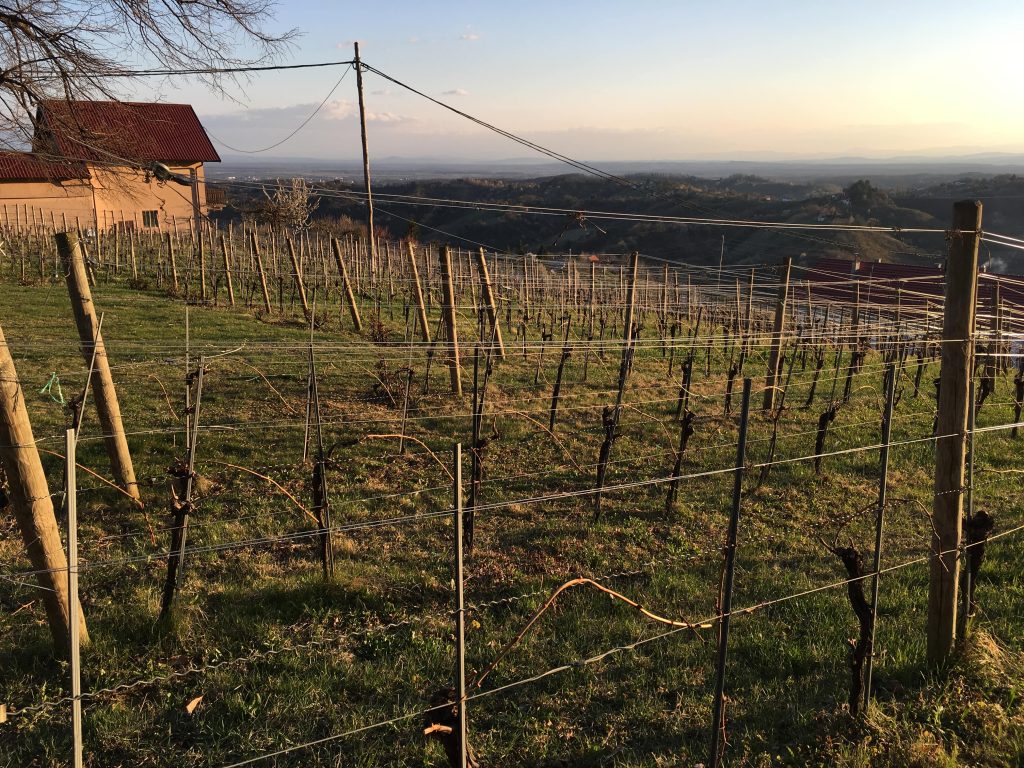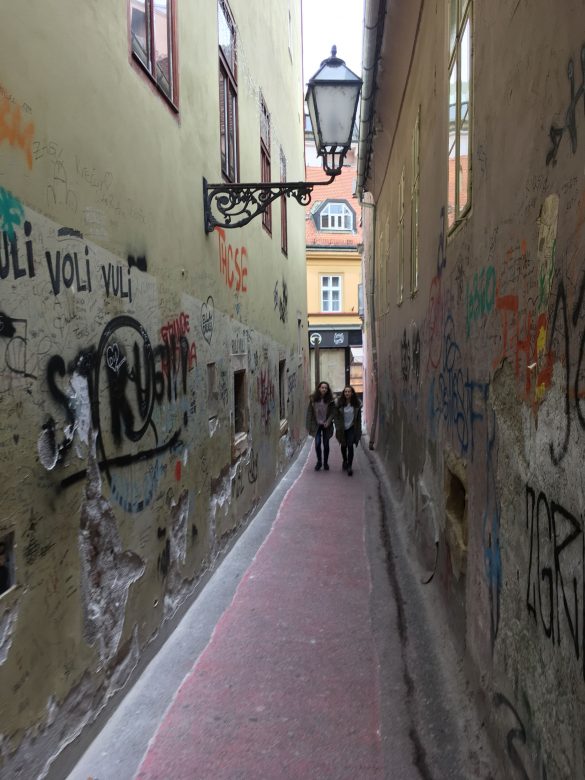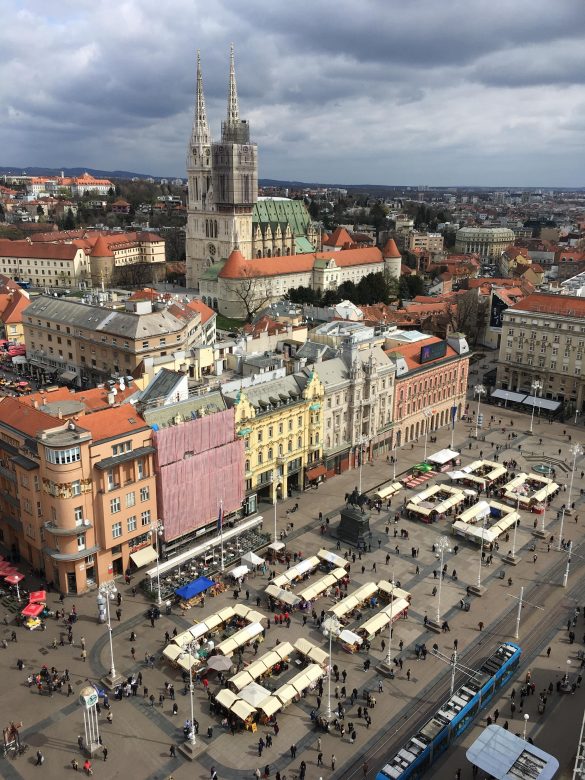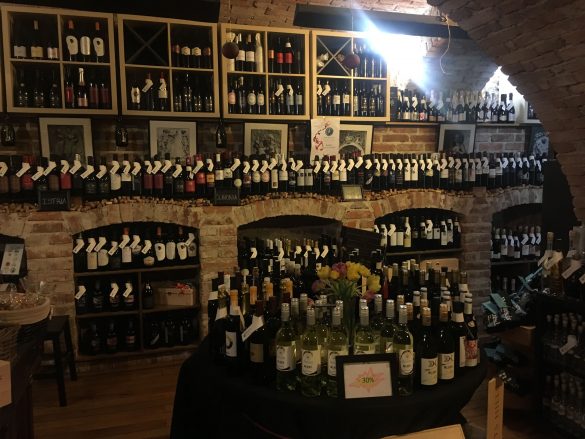While Croatia might conjure up images of a crystal-clear blue sea lapping white stone beaches on its many islands, there’s a different side to Croatia — the continental, inland side, which offers a completely different dimension to its wine.
Surrounding the Croatian capital of Zagreb are the Croatian Uplands, and further east lie Slavonia and the Croatian Danube region. What unites them is a continental climate, although each region is quite distinctive in its varieties and wine styles.
The Croatian Uplands: cosmopolitan tastes & tremendous terroir
Zagreb is a cool and quirky capital city, with a host of niche galleries and trendy bars to explore. Surrounded by hillsides and mountains, not only are these the lungs of the city but Zagrebites benefit from having hiking and skiing on their doorstep too. These uplands are also home to some of Croatia’s top bubbles and cool-climate wines.
Wine tradition in the Croatian Uplands
Although just 20 minutes away, the Uplands is a world away from the cosmopolitan city with dozens of historic castles high on the hilltops and quaint abodes nestled in settlements below. Steep slopes have narrow patches of vineyards leading down the valleys with box-shaped houses and Austro-Hungarian style bell-bottomed church spires peering over the top.

Vineyards have been planted here since at least the Roman times and the host of native varieties found here is a testimony to its rich viticultural history. The native varieties that remain are usually marked by nests of large needle-shaped stakes (the traditional training method for the old-vine field blends).
A modern wine revolution
While the vineyards and architecture in the region might reflect long-standing tradition and history, within the cellars there’s a modern wine revolution happening. Innovative winemakers and the new generation of historic wine families have changed the story of the Uplands in the last two decades. Although the native varieties are the most historical, the stronghold here is now with the international varieties of Riesling, Chardonnay and Pinot Noir.
The cool, continental climate is ideal for making linear and refreshing Riesling wines, which are made in a range of styles — from classically aged in Slavonian oak to fresh styles made in cement eggs and/or stainless steel tanks. The new, yet old, trend is also to produce Riesling wines made with significant skin contact and aged in amphorae, Georgian Qvevri in fact, under the ground. These orange wines are nuanced and complex, yet fresh, the height of orange — and natural wine — fashion.
The combination of cool temperatures and the Uplands’ limestone-rich soils — especially in Plešivica — has also earned it the moniker of ‘Croatia’s little Champagne’ and led to an explosion of high quality sparkling wines.
Traditional sparkling wine varieties of Chardonnay and Pinot Noir are popular for the Champenoise-method sparkling wine, but you’ll also find bubbles made of Riesling and some native varieties (look out for Plavec Žuti). This was also where I had my first experience with amphora-aged sparkling wine (which was sublime, in case you are wondering!)
On sandier sites in the Uplands, you can also find red wines — including notably the Bordeaux varieties of Merlot and Cabernet Franc. Although producing rich red wines is still a small niche in the Uplands, the right site and slope can give you great results.
Slavonia: The kingdom of Graševina and homemade charcuterie
“Slavonia is hipster now,” says Sontacchi winemaker Krunoslav (Kruno for short) sardonically, as he pipes out a sample of 2018 SuperSlav from the barrel. It’s a cloudy and delicious skin-contact white blend of seven native Croatian varieties. Kruno’s punk leather jacket makes quite the contrast with the traditional Austro-Hungarian apparel of his predecessors in the photos hanging in the barrel room walls behind him.
I ask what it means to be a Slav. “Making your own meat, making your own furniture, partying too hard and perhaps living with your parents too long,” Kruno muses, as his brother Anton comes in with another plate of homemade charcuterie from the wine bottle-shaped meat cellar outside.
Making your own charcuterie may be a hipster habit nowadays, but Kruno and Anton’s family have been making their own charcuterie and their own furniture ever since they migrated from Italy several generations ago. Slavonia might be cool on today’s fashion radar, but Slavonia hasn’t really changed, so I’m told.
Driving around the flatlands of Slavonia feels like a step back in time — with pastoral countryside, small villages and a slow pace of life. This is the heartland of Croatian tradition and also the heartland of Croatia’s most planted variety, Graševina.
The moderate continental climate of Slavonia means that winters are harsh and summers are hot. It’s ideal for growing grapes and you can ripen most varieties here — on my visit I tasted wines ranging from beautifully ripe and fruit-forward Bordeaux blends to lean, green Riesling. But the terrain is particularly suitable for Graševina (aka. Welschriesling), where the results are some of the best examples in the world of this widely grown variety.
Graševina — Croatia’s most loved grape
Graševina is in fact Croatia’s most planted grape variety and, while it is planted all over the country, much of it comes from Slavonia and this northeastern corner of Croatia.
Considering it is so widely planted, there is, of course, a wide range of quality and styles. The best examples are usually found around the Slavonian wine capital of Kutjevo, where the top sites produce wines with high acidity, flinty minerality and complex spice aromas that develop well over time in bottle.
Younger styles of Graševina, made to be drunk within a couple of years of the vintage, have pretty floral aromas and notes of peach and apple. These can sometimes be slightly effervescent with their fresh acidity and are usually made simply in stainless steel tanks. Some producers go the whole hog and make their Graševina sparkling with a second fermentation too.
You’ll also find a range of sweet Graševina wines. As a variety with naturally high acidity, it can remain on the vine for weeks or months after the usual harvest date and is used for sweet, late harvest wines and luscious noble rot wines.
Where to eat, sleep and drink in Zagreb
Planning a visit to Zagreb as a base to explore the winelands of continental Croatia? Here are my picks of the top spots to eat, drink and sleep in Croatia’s capital.
Hot on Zagreb’s menu is the haute-cuisine of Dubravkin Put (dubravkin-put.com); seasonal tasting menu of Noel (noel.hr); and stylish small plates at Mali Bar (Facebook/MaliBarZagreb).
For wine bars, try Cheese Bar (Facebook/Cheese-Bar), natural wine joint Bastion 19 (bastion.hr) and the Aladdin’s Cave of wine that is Bornstein’s (bornstein.hr) 200-year-old vaulted cellar and intimate wine bar.
For more tasting experiences, Zagrab Bites (zagrebites.com) offers English-language wine and gastronomy tours; and foodies can’t miss a visit to Dolac, the daily farmer’s market.
To sleep in Art Nouveau glamour, try the Esplanade (esplanade.hr); for mid-range comfort, try the Palace (palace.hr); and budget travellers can’t beat Airbnb (airbnb.com).
Zagreb airport (British Airways flies direct from Gatwick) is 10 miles from Zagreb centre. Ilok is a 3.5 hours by car.
More on Croatia:
- Wine lover’s guide to Croatia
- A taste of Pag island
- Croatian wine varieties to discover
- Discovering Stari Grad
- Romancing the truffle: Istrian wine and truffles
- 101 on Istrian terroir





